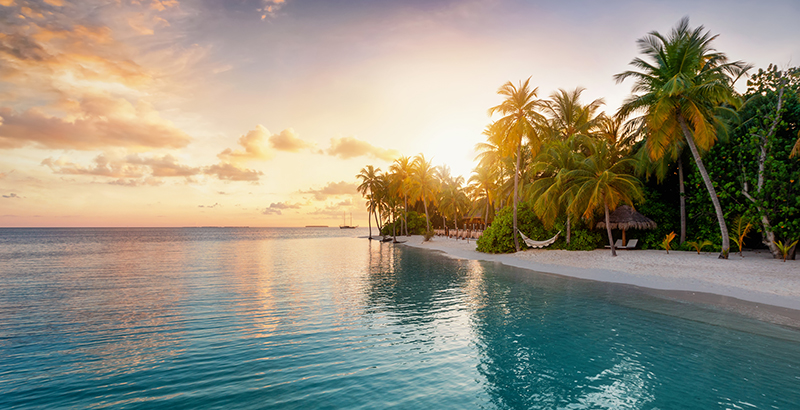Phillips: During COVID, Teachers Looked Beyond the Classroom to Meet Students’ Social-Emotional Needs. That Type of Innovation Must Continue

Get stories like this delivered straight to your inbox. Sign up for The 74 Newsletter
Imagine you’re underwater in the Caribbean Sea, gazing at colorful coral reefs and schools of fish. Sunlight filters through the water as it gently moves you back and forth. You breathe in and out, slowly and deeply. How do you feel?
Educator Sandra Turner has led her middle and high school students through this mindfulness exercise over the past few months. Turner, recipient of a National Geographic Emerging Explorer grant to support her work teaching young people about global climate change, saw her students struggling with the stress of COVID-19. To unplug from her own pandemic-related stress, she traveled to the Caribbean, where she discovered the power of breathwork while learning to free dive. She brought the breathing exercises she learned back to her students in a virtual class focused on understanding the sea. She found that, when paired with ocean imagery, the exercises calmed them and boosted their well-being. One student even told Turner the ocean mindfulness exercise was the best thing that had happened to her during the pandemic.
Over the past 18 months, I’ve seen many teachers in our National Geographic educator community and beyond tap into their experiences outside the classroom to explore and develop innovative practices like this one. But what will happen to these ideas and adaptations when “normal” returns? Will education leaders take notice and help these tools and practices spread and take hold? Or will they get pushed aside as school systems slide back into pre-pandemic status quo?
At this critical moment, it is important to avoid reverting to old ways that didn’t work. Dated, drab curriculum. Routines begging for a refresh.
Students and teachers agree that education wasn’t perfect before the pandemic. In a 2019 survey of high school students, 75 percent reported having negative feelings toward school. Meanwhile, many educators say the status quo in schools doesn’t fulfill them personally or professionally. More than half of teachers nationally are at least somewhat likely to leave the field within the next two years.
When COVID-19 subsides, education leaders will have a fundamental choice: Return to “normal” or reimagine education by building upon teacher-led ideas that emerged during the pandemic. To keep teachers in classrooms and support and engage students, education leaders should empower teachers to continue reshaping what their students learn —and follow their lead.
To do this, educators must be supported in focusing on social-emotional well-being while delivering high-quality academic content. Turner’s ocean mindfulness project is just one example of how educators have led the way in prioritizing mental health. After noticing students’ and families’ stress during the pandemic, Kelly Koller, who teaches technology to middle schoolers in Wisconsin, reached out via social media to Byron McClure, a school psychologist in Washington, D.C., because both were interested in ways to encourage students to find calm in the outdoors. They partnered to create Outdoor SEL, which offers free resources to help educators use the outdoors to heal and empower students. “There is power, there is magic in being outdoors,” McClure told a local TV station. “I feel my thoughts becoming clearer, I feel that I’m able to become more productive, that I am able to fully engage in the moment of what’s going on.” This sense of calm and mindfulness is critical for learning, and once the pandemic wanes, schools must continue to find ways to nurture it, alongside critical skills and knowledge.
A focus on social-emotional learning will serve the education system well beyond the pandemic by preparing students and educators to address the planet’s most pressing issues — from racism to the climate crisis. Educators should have tools to address these current events with students, and some have led the way in developing them. Claire Blankenfeld, who teaches high school social studies near Baltimore, received a grant from the National Geographic Society to create a series of social justice-oriented lessons that engage her students in critical thinking. Her lessons ask timely questions like, “What is an ideal citizen?” and “How has the equal protection clause of the Fourteenth Amendment been interpreted at times to protect and at times to limit the civil rights of minority groups?” In Texas, educator Kelly Albus launched an effort to help other teachers use geographic information system technology — which captures and displays data about specific places — with their students to investigate air quality in their communities. When educators are empowered to discuss these issues with their students, it not only elevates their innovative ideas, but cultivates environments where students want to get involved and find solutions.
When our education system emerges from the pandemic, we will be at a crossroads. It won’t be the time to settle back into systems, practices and policies that don’t fully meet the needs of students and educators. This is an opportunity to do better, to find the rich, transformative learning experiences that arose during the crisis and help them take hold. To leverage recovery funds to sustain and spread those promising practices and tools. To work with educators and students to move forward and create the dynamic, engaging classrooms that today’s society demands.
Vicki Phillips is chief education officer of the National Geographic Society and former director of college-ready education at the Bill & Melinda Gates Foundation. The Bill & Melinda Gates Foundation provides financial support to The 74.
Get stories like these delivered straight to your inbox. Sign up for The 74 Newsletter

;)